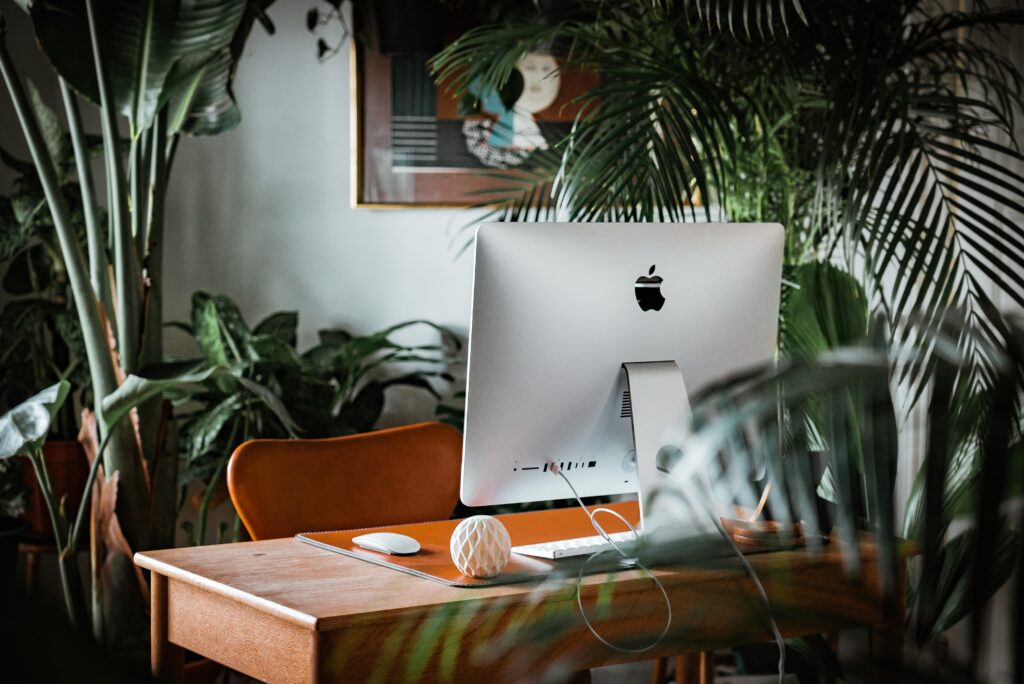As organizations realize the importance of promoting the work environment and increasing well-being, office design concepts have undergone major changes in recent years. The focus has increasingly shifted from the usual desk-chair solution to creating environments that promote creativity and productivity. We highlight some prominent trends that shape modern workplaces both in Estonia and around the world
Biophilic Design
Biophilic design, a concept that integrates elements of nature into the workplace, has gained immense popularity. Research shows that exposure to natural elements, such as plants, natural light, and organic materials, has a positive impact on employee health and well-being. By incorporating greenery, living walls, and large windows, offices can create a more calming and stimulating environment. This trend not only enhances aesthetics but also improves air quality and reduces stress levels, thereby increasing overall employee satisfaction and productivity.
Flexible Workspaces
The rigid cubicle-filled office layout of the past has been replaced by flexible workspaces that cater to diverse working styles. Flexibility is essential in accommodating the needs of remote work, freelancers, and project-based teams. The office design concept now focuses on providing various work areas, such as hot-desking zones, collaboration lounges, private pods, and communal areas. By allowing employees to choose where and how they work, productivity and creativity are encouraged, leading to better outcomes for both individuals and teams.
Technology Integration
With the advancement of technology, office design has adapted to incorporate smart features. IoT (Internet of Things) devices, smart lighting systems, and digital collaboration tools are now part of modern office spaces. These tech-savvy solutions optimize efficiency, streamline communication, and contribute to a seamless work experience. Additionally, integrating technology into the design improves sustainability efforts by enabling energy-saving practices, reducing waste, and creating eco-friendly work environments.
Well-being and Employee Health
Employee well-being has become a central focus in office design concepts. Ergonomic furniture, adjustable standing desks, and wellness rooms are some of the elements introduced to promote physical health. Furthermore, companies are investing in creating spaces for relaxation and mental rejuvenation. Meditation rooms, nap pods, and wellness programs foster a healthy work-life balance, reduce burnout, and boost employee morale.
Hybrid Workspaces
As remote work becomes more prevalent, offices are adapting to accommodate hybrid work models. The office design is now centered around facilitating smooth transitions between remote and in-office work. Virtual meeting rooms, advanced video conferencing facilities, and cloud-based collaboration tools ensure seamless communication between on-site and remote teams. The physical office space remains a vital hub for team building, collaboration, and fostering company culture.
Emphasis on Collaboration
Collaboration is key to driving innovation and problem-solving. Modern office design concepts prioritize creating spaces that encourage spontaneous interactions and teamwork. Open-plan layouts, interactive brainstorming areas, and common spaces for socializing all contribute to a collaborative work environment. Such arrangements foster creativity and collective thinking, leading to more efficient decision-making processes and innovative solutions.
As the work landscape continues to evolve, it is essential for businesses to adapt their office design to attract and retain top talent, boost productivity, and foster a positive company culture. By embracing these innovative office design concepts, companies can create workspaces that truly empower their employees to thrive and succeed in the modern world of work.
